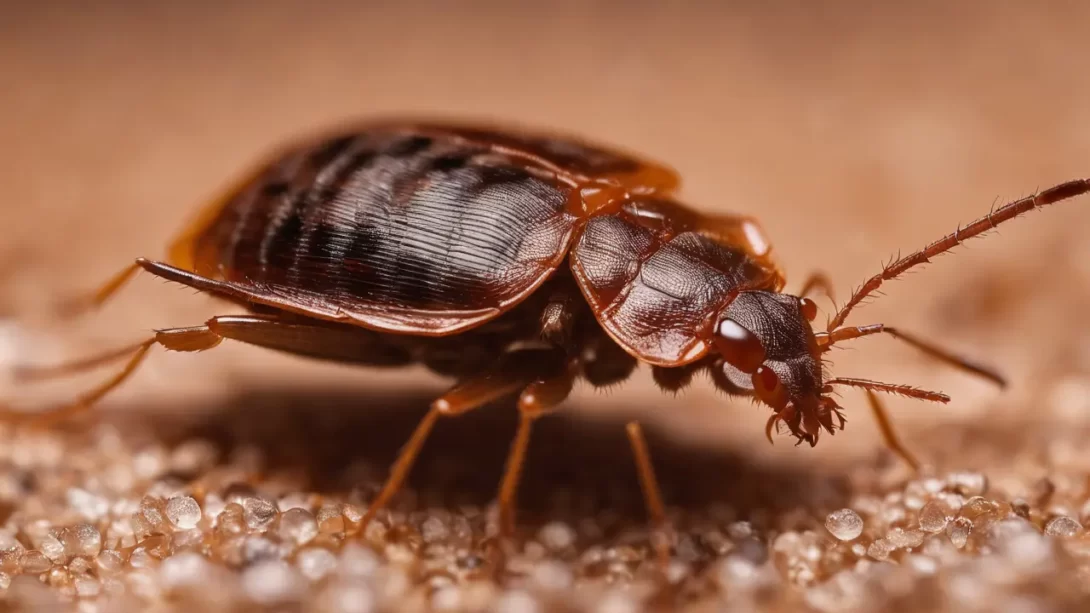Bed bugs are notorious for their ability to infest various environments, particularly those where humans reside. A common question that arises is whether these pests can live in wood, such as in furniture or wooden structures. This article seeks to explore and clarify the relationship between bed bugs and wooden surfaces, providing valuable information for homeowners and renters alike.
Bed Bugs
Bed bugs (Cimex lectularius) are small, nocturnal insects known for feeding on human blood. These pests are typically reddish-brown, oval-shaped, and about the size of an apple seed. They are masters of hiding and can be found in a range of environments, though they prefer locations close to where people sleep.
There are several misconceptions about bed bugs, especially regarding their living conditions. Contrary to popular belief, bed bugs are not attracted to dirt or decay but to the warmth and carbon dioxide emitted by humans. They often hitchhike on luggage, furniture, and clothing, making their way into homes and other dwellings.
Bed Bugs and Wooden Surfaces
Bed bugs are adaptable creatures that can inhabit various surfaces, including wood. Their flat bodies allow them to squeeze into tiny cracks and crevices, making wooden furniture like bed frames, headboards, and dressers potential hiding spots. They prefer wood over metal and plastic because wood surfaces provide more crevices and are generally closer to where people sleep.
The propensity of bed bugs to live in wood is linked to their survival strategy. Wood, being porous and often textured, offers ideal hideouts for these pests. While bed bugs do not burrow into wood or eat the wood itself, they exploit the cracks and joints in wooden furniture to find refuge.
Identifying Bed Bug Infestations in Wood
Recognizing a bed bug infestation in wooden furniture or structures is crucial for timely intervention. Signs of an infestation include small, dark spots (bed bug excrement), shed skins, and the bugs themselves hiding in cracks and crevices. Blood spots on bedding can also indicate their presence, as bed bugs may get crushed while feeding.
Inspecting wooden items for bed bugs involves checking the joints, crevices, and any cracks in the surface. Pay special attention to areas where the wood is assembled or has natural fissures. Bed frames, nightstands, and other furniture pieces close to sleeping areas are common hotspots for bed bug activity.
Management and Prevention
Effectively managing and eliminating bed bugs in wooden furniture requires a comprehensive approach. The first step is thorough cleaning and vacuuming of infested items to remove any visible bugs and eggs. Special attention should be given to seams, crevices, and cracks where bed bugs like to hide. Vacuuming, however, is not enough to eliminate an infestation completely.
Chemical treatments can be effective against bed bugs in wood. Insecticides specifically designed for bed bug eradication can be applied to infested areas. It’s important to use products that are safe for indoor use and to follow the manufacturer’s instructions carefully. For severe infestations, it may be necessary to seek professional pest control services, as they have access to more potent treatments and specialized equipment.
Preventive measures are key to keeping bed bugs from infesting wooden items. Regular inspections of furniture, particularly second-hand items, can help detect problems early. Using protective covers for mattresses and box springs can also reduce the risk of bed bugs establishing themselves in bedroom furniture.
Professional versus DIY Approaches
When dealing with bed bugs in wooden furniture, the decision between a professional exterminator and a DIY approach depends on the severity of the infestation. For minor infestations, DIY methods, such as vacuuming, steam cleaning, and the use of over-the-counter insecticides, might suffice. However, for more widespread or recurrent infestations, professional intervention is recommended. Pest control professionals have the expertise, experience, and tools necessary to effectively eradicate bed bugs from homes, including wooden furniture and structures.
Myths and Facts about Bed Bugs in Wood
Several myths about bed bugs in wood persist, leading to misconceptions about their behavior and control. One common myth is that bed bugs can bore into wood like termites or carpenter ants. In reality, bed bugs cannot penetrate the wood surface; they only hide in existing crevices. Another myth is that wooden furniture is more prone to bed bug infestations. While wood provides hiding spots, bed bugs are attracted to the presence of humans, not the material of the furniture itself.
Environmental Considerations in Bed Bug Control
When addressing bed bug infestations, especially in wood, environmental considerations should be taken into account. Chemical treatments, while effective, can have implications for indoor air quality and the health of household residents. It’s important to choose environmentally friendly and safe products whenever possible. Natural alternatives, like diatomaceous earth and essential oil-based sprays, can be effective in some cases and are less harmful to the environment.
In addition to chemical treatments, non-toxic methods like heat treatment can be particularly effective against bed bugs in wood. This method involves raising the temperature in the infested area to a level that is lethal to bed bugs. Professional pest control services often offer heat treatments as a safe and effective solution.
Conclusion
In conclusion, while bed bugs can indeed live in wood, they do not bore into it but instead reside in the cracks and crevices of wooden furniture and structures. Managing bed bug infestations in wood involves a combination of thorough cleaning, appropriate chemical treatments, and preventive measures. It’s essential to understand the difference between fact and myth when dealing with bed bugs in wooden environments.
Regular inspection of wooden furniture, particularly in and around sleeping areas, is crucial for early detection and control of bed bugs. For severe infestations, professional pest control services are recommended. By staying vigilant and adopting comprehensive management strategies, homeowners can effectively combat bed bug infestations in wooden furnishings, ensuring a pest-free and comfortable living space.
The key to successful bed bug control in wood lies in understanding their behavior, utilizing effective treatment methods, and maintaining consistent preventive measures. With the right approach, it is possible to eliminate bed bugs from wooden environments and prevent their return, safeguarding the comfort and well-being of your home.



